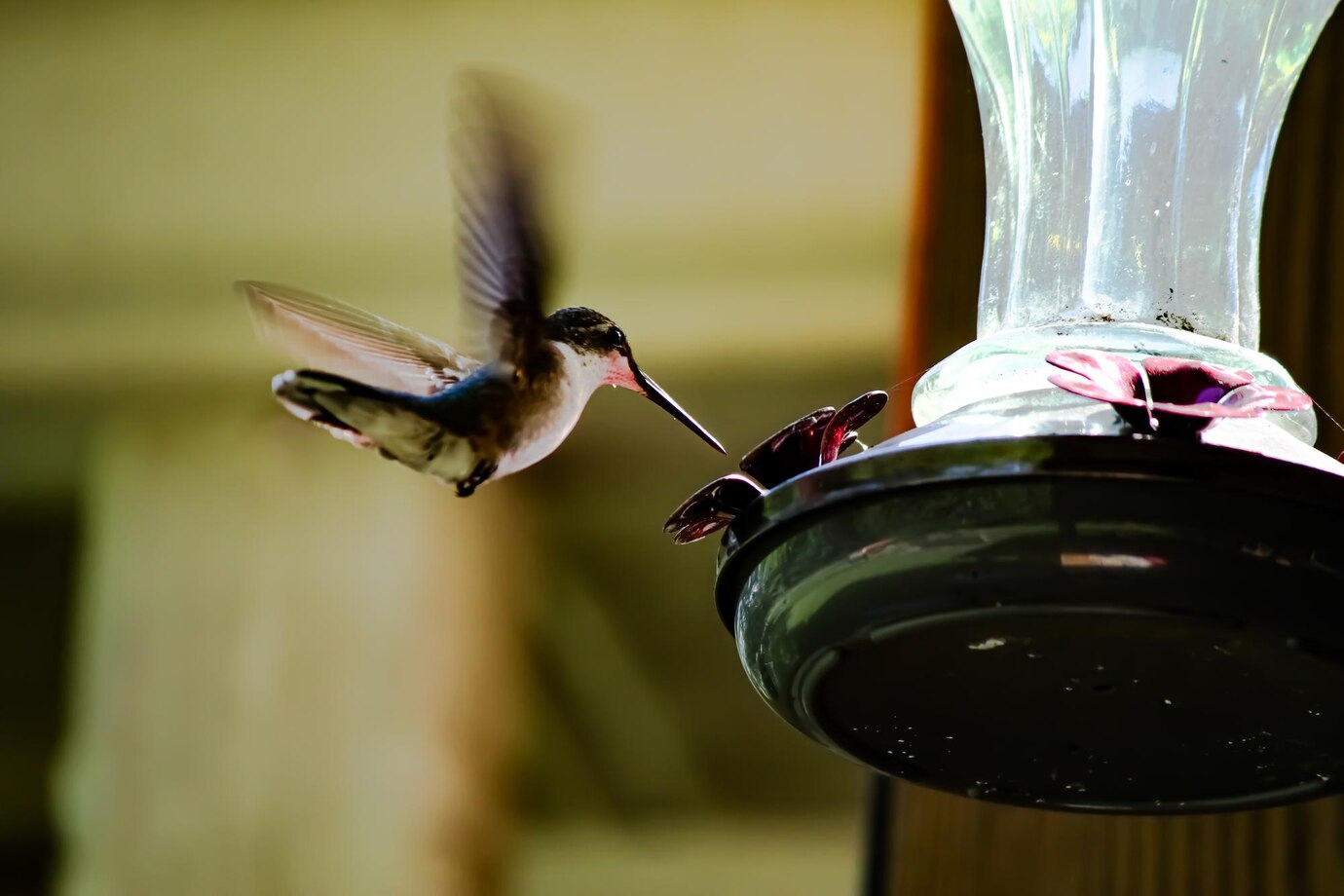Hummingbirds are delightful visitors to any garden, but bees can often become unwanted guests at hummingbird feeders. If you’re struggling with this issue, you’re not alone. Many bird enthusiasts wonder how to keep bees away from hummingbird feeders without harming these important pollinators.
In this comprehensive guide, we’ll explore 10 proven tips to deter bees while still attracting hummingbirds. From feeder placement to DIY solutions, we’ll cover everything you need to know to create a bee-free zone for your feathered friends.
Why Do Bees Swarm Hummingbird Feeders?
Before learning how to keep bees away from hummingbird feeders, it’s important to understand why bees are attracted to them in the first place. Bees, like hummingbirds, are drawn to sugary nectar. Since hummingbird feeders contain a sweet solution, bees and wasps often mistake them for a natural food source.
While bees are essential pollinators, their presence at feeders can:
-
Scare hummingbirds away
-
Dominate the feeder, preventing birds from feeding
-
Increase the risk of stings (especially with wasps)
Now, let’s dive into the 10 best ways to keep bees away from hummingbird feeders effectively and humanely.
1. Choose Bee-Proof Hummingbird Feeders
One of the best strategies for how to keep bees away from hummingbird feeders is selecting a feeder designed to deter insects. Look for:
-
Built-in bee guards (small plastic mesh covers over feeding ports)
-
Saucer-style feeders (bees can’t reach the nectar as easily)
-
Red-colored feeders (bees are less attracted to red than yellow)
Popular bee-resistant models include the Perky-Pet Pinchwaist Feeder and Aspects HummZinger.
2. Avoid Yellow on Feeders
Bees are highly attracted to the color yellow, which they associate with flowers. Many hummingbird feeders have yellow accents, which can unintentionally invite bees.
How to keep bees away from hummingbird feeders using color?
-
Opt for all-red feeders (hummingbirds love red, but bees don’t)
-
If your feeder has yellow parts, repaint them red or cover them with tape
3. Relocate the Feeder Frequently
Bees are creatures of habit and will return to the same food source once they find it. By moving your feeder every few days, you can disrupt their navigation.
Tips for relocation:
-
Move the feeder at least 10-15 feet away from its original spot
-
Place it in a shadier area, as bees prefer sunlit locations
4. Use a Drip-Free Feeder Design
Leaking or dripping nectar is a major bee attractant. When sugar water spills, bees detect it quickly and swarm the feeder.
How to keep bees away from hummingbird feeders by preventing leaks?
-
Choose no-drip feeders (like the First Nature feeder)
-
Ensure the seal is tight and check for cracks regularly
-
Hang the feeder in a stable position to avoid tipping
5. Reduce Sugar Concentration in Nectar
Hummingbird nectar is typically a 4:1 water-to-sugar ratio, but bees prefer stronger sugar concentrations.
Solution:
-
Dilute the nectar slightly (e.g., 5:1 ratio)
-
This makes it less appealing to bees while still being safe for hummingbirds
6. Install Bee Guards or Moats
Bee guards are small plastic mesh covers that prevent bees from reaching the nectar while allowing hummingbirds to feed.
Alternative:
-
Use an ant moat (which also deters bees)
-
Fill it with water to block crawling insects
7. Provide an Alternative Bee Water Station
Since bees need water, offering a separate water source can distract them from the hummingbird feeder.
How to set it up:
-
Place a shallow dish with water and pebbles (to prevent drowning)
-
Add a few drops of sugar water to attract bees away from the feeder
8. Apply Light Coatings of Cooking Oil or Vaseline
A light smear of vegetable oil or Vaseline around feeding ports can make it difficult for bees to land.
Important:
-
Use sparingly to avoid harming birds
-
Reapply after rain or every few days
9. Hang Feeders in the Shade
Bees prefer feeding in sunny spots, while hummingbirds don’t mind shade.
Best placement:
-
Under a tree canopy or porch roof
-
Away from direct sunlight
10. Clean Feeders Regularly
Sticky residue and old nectar can attract more bees.
Cleaning tips:
-
Rinse with hot water and vinegar weekly
-
Avoid soap (can leave harmful residues)
Final Thoughts on How to Keep Bees Away From Hummingbird Feeders
Learning how to keep bees away from hummingbird feeders ensures a peaceful dining experience for your hummingbirds while still supporting pollinators. By using bee-proof feeders, adjusting placement, and maintaining cleanliness, you can enjoy a bee-free hummingbird haven.
Have you tried any of these methods? Share your experiences in the comments!
FAQ: How to Keep Bees Away From Hummingbird Feeders
Q: Will these methods harm bees?
A: No, these tips are bee-friendly—they simply redirect bees rather than kill them.
Q: How often should I change the nectar?
A: Every 3-5 days (more often in hot weather).
Q: Do fake wasp nests work?
A: Some gardeners report success, but results vary.
By following these 10 proven tips, you’ll master how to keep bees away from hummingbird feeders effectively and humanely. Happy birdwatching!

Leave a Comment